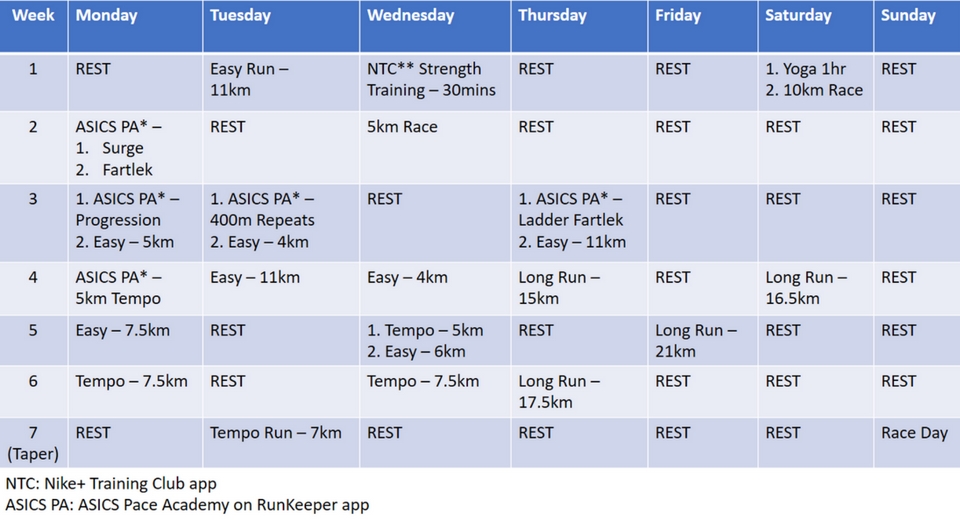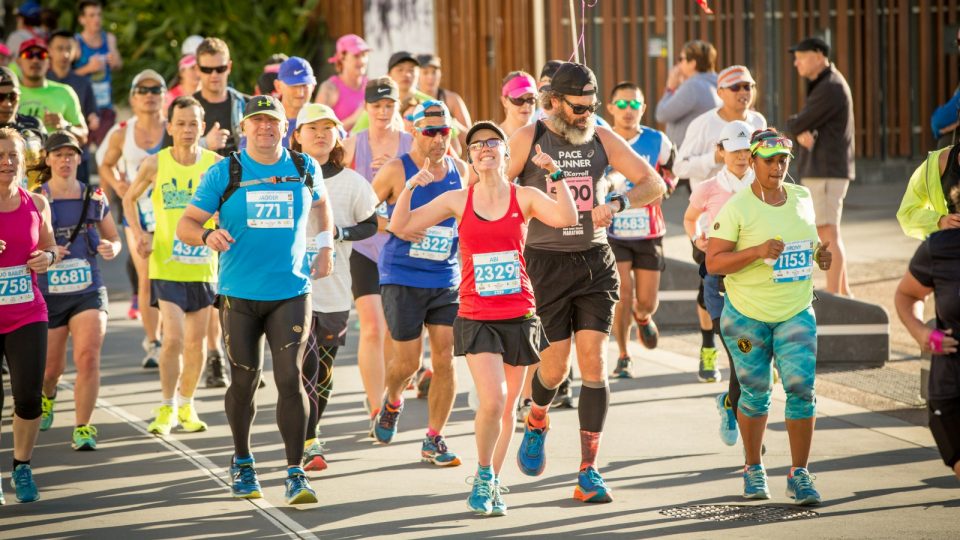With only 7 weeks left before race day, I had to make a critical decision: to run a full marathon or half marathon. For all my previous marathons, I always adopted 4 months training period. I know that anything can happen in a marathon despite sufficient training, so committing myself to a 7 weeks marathon training sounded like a suicidal plan.
People are always saying how easy GCAM course is, and everyone who runs there would come back with a PB. But, they didn’t say whether those people who trained for less than 2 months also achieved a PB.
My inner voice told me, “Didn’t you always wanted to run a full marathon overseas? Isn’t it on your bucket list? You have 5 local marathons under your belt. If you just train harder this time, you should be able to, at least, finish the race. Remember that last time you signed up for Bali Marathon FM but you screwed it up and ran an HM instead, because you didn’t train enough? Now, it’s your chance to redeem yourself with GCAM FM!”
I listened to my inner voice and signed up for a full marathon.
Training Plan
Even though I have 7 weeks prior to race day, I knew that I would probably be busy with work and travelling to Gold Coast during the final week (taper week), so I only have 6 weeks to train for the marathon.
I searched online for 6 weeks marathon training plans but couldn’t find a good plan that suits my capability, most of them require me to log a weekly long run of at least 21km, which wasn’t something I can do easily without building up my mileage.
I decided that I’d follow my own plan instead. Rather than writing a pre-determined plan, every day I ask my body what it can do on that day, and go for it. Every week, I strived to achieve weekly mileage of at least 30km.
Below is my training record.

What I Learned
Here are 5 things I learned during my brief training period.
1. I learned to train harder.
With such a short training period, I had to push myself to train harder than I have ever trained before. My mileage had to be at least 5km. So, if I do an interval run of less than 5km, I’ll continue with another interval run or an easy run.
In week 4, I did two things that I’ve never done before: running for 4 days consecutively and doing 2 long runs in a week. I guess I really pushed my limits. Thankfully, I didn’t suffer any injuries.
2. I learned to take rest days when necessary.
When deciding whether to exercise or rest, I listened to both my physical body as well as my heart. If my whole body was aching from the workout the previous day, it’s a sign that I should take a rest day. However, if only my legs were sore, I would still go out for an easy run.
If I had a particularly bad day, staying in kept me sane. If I had a lazy day, I would work out. I also opted to rest on weekends instead of doing long runs in order to spend more time with family and friends, and to be able to start Mondays with zest.
3. Interval training and tempo run are fun.
There are days when I just wanted to get the run done as soon as possible, there are also days when I got so bored of the easy-paced run. During those days, interval and tempo runs were my saviour. These high-intensity runs pumped up my heartbeat and gave me the runner’s high, while improving my endurance and speed.
4. Training in a park has its own advantages
Most of my training runs were done in Bishan Park. The first advantage of training in a park is the water cooler; I don’t have to carry my own bottle even when I do long run. Secondly, most parks in Singapore have relatively flat course so I could really train my speed.
Thirdly, there is no need to plan for running route, I just need to decide how many loops I want to tackle. Lastly, it’s close to home, so I can save time by running the short distance to the park from home.
5. Trying something new may do more harm than good.
Strength training is usually not part of my marathon training plan, yet I pushed myself too hard by doing a 30 minutes intense strength training in week 1, which made my body sore for the next few days and not able to run.
In general, strength training is a good thing to implement during marathon training to help prevent injury and make you stronger and faster; however, in my case where I have a short training period, I decided to focus on the things that I can do well, and that is running.
PB Improvement

Before GCAM, my PB for a full marathon was 5:48:47, which equals to an average pace of 8:16 mins/km. For GCAM, I was confident that I could finish the race, but not so confident about achieving a PB. Nevertheless, I still set a goal of 7:30 mins/km race pace, which equals to finish time of 5:16:27, to motivate myself.
I was so fortunate that my legs didn’t give up on me, on the race day. As the weather was bearable, and not as hot as Singapore’s temperature and humidity, I was able to keep on running almost throughout the entire race, with brief walking breaks at hydration station, toilet, and when I felt exhausted.
I did better than my goal. I finished the race with 5:12:57, a 35-minute improvement from my previous PB. One more item ticked-off from my bucket list.
Do you follow a 4-months plan for marathon training? Do you think the usual 4-months plan or shorter plan is better?





